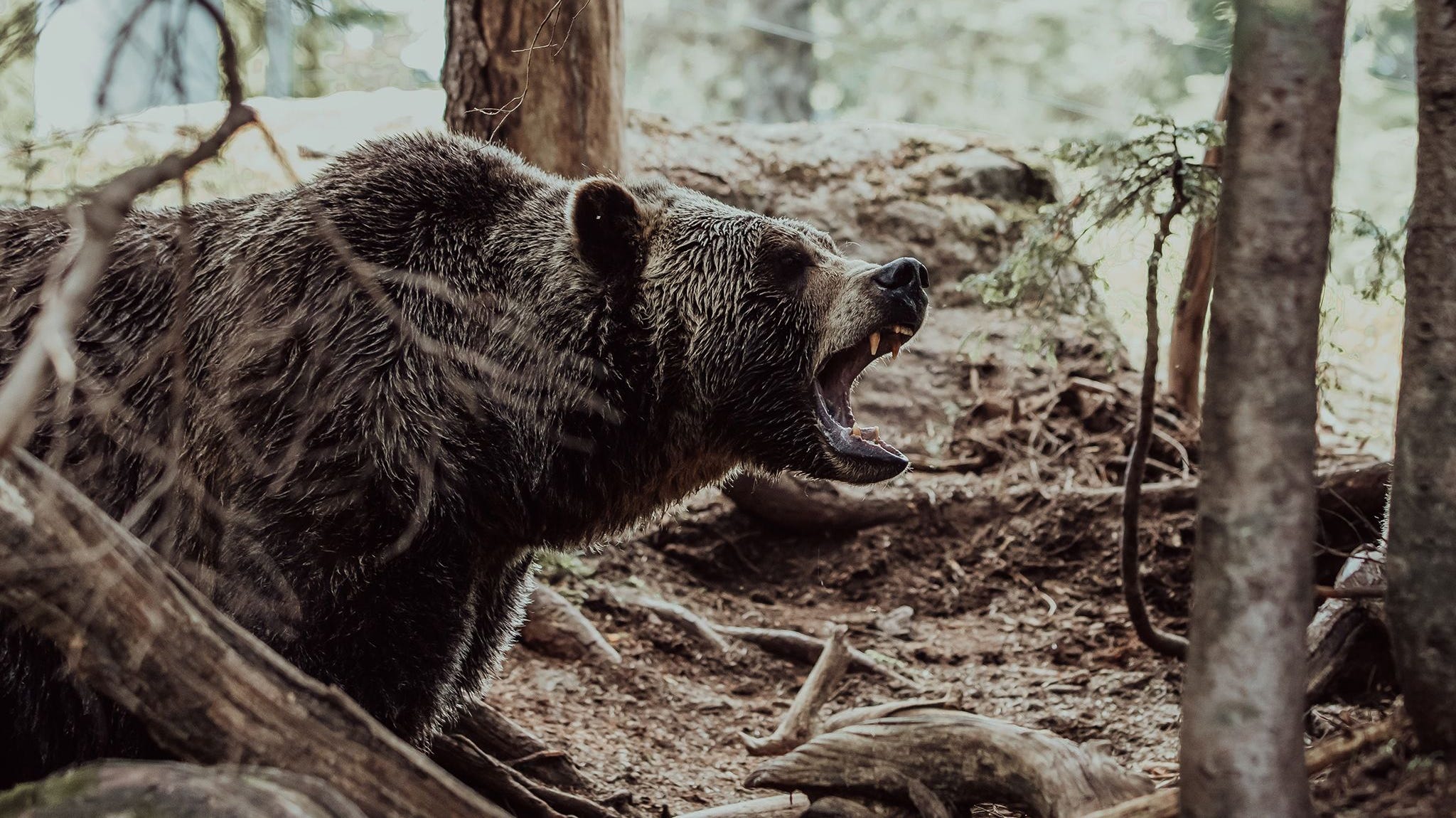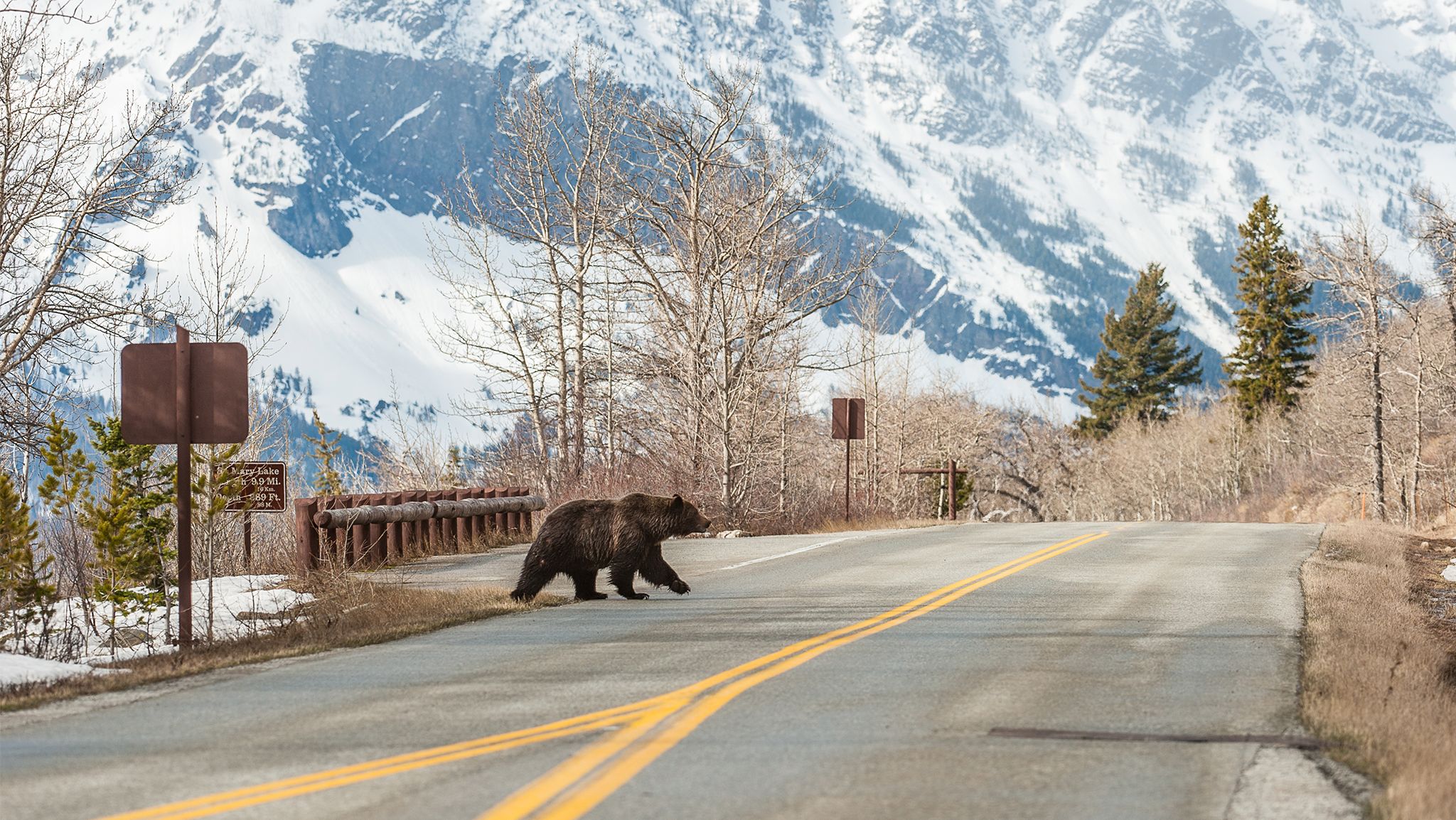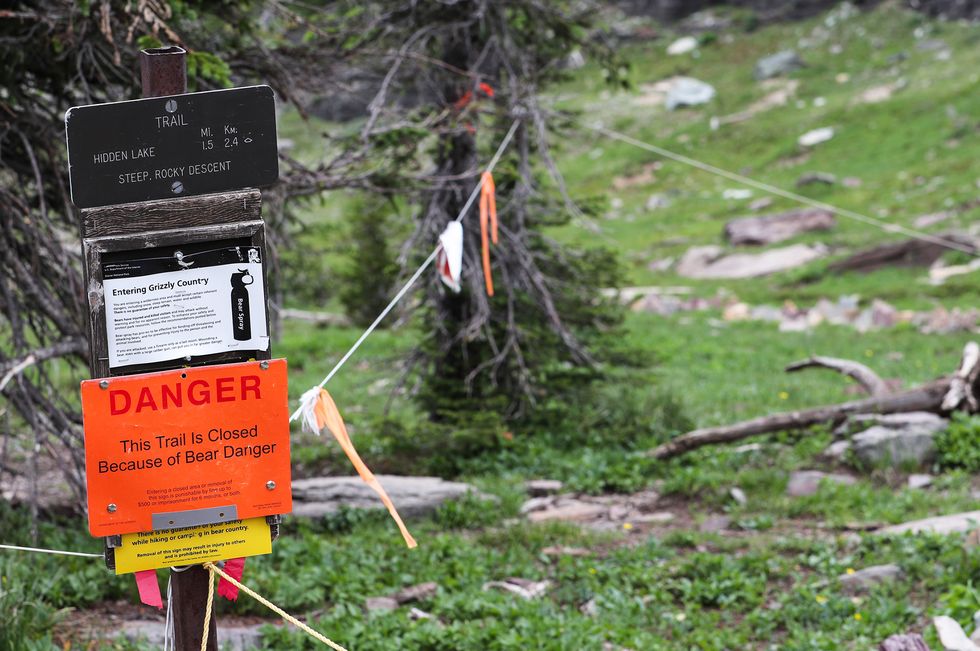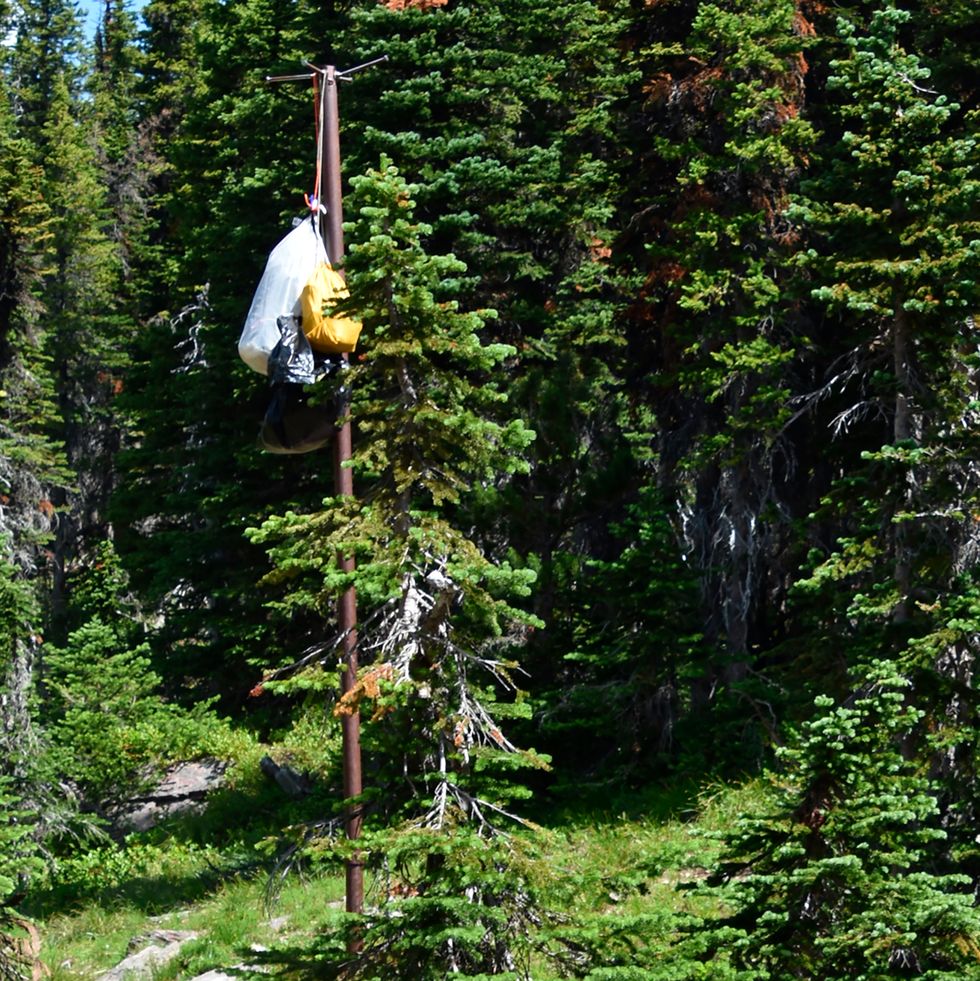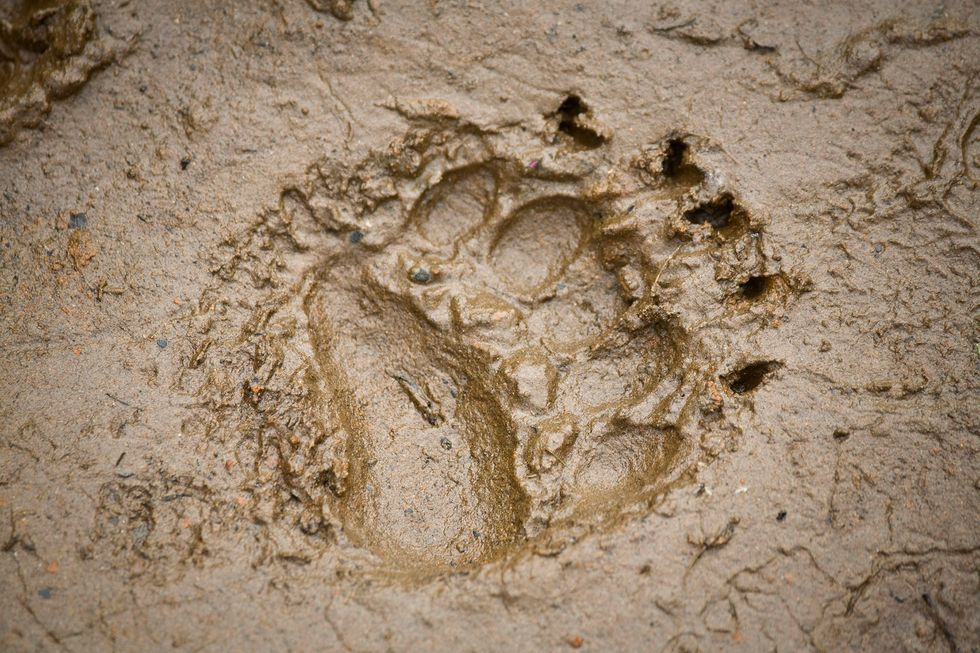The first grizzly was found lying in the 15th tee box eating a maggot-infested carp like it was corn on the cob. The neighboring Marias River had flooded, Scott Lennemann, golf course superintendent at Marias Valley Golf & Country Club, told me. The retreating water then left behind a lunch buffet of dead carp, which the lucky bear feasted on.
I heard about Lennemann’s golf course guest through the small-town grapevine that connects the scattered communities across the Montana prairie I call home. I knew—or thought I did—that the only big animals roaming the wide grassy valleys were steers fattening up to make next summer’s BBQ. Sure, Montana had massive bears (up to 700 pounds), but in the Rockies. Marias Valley was in Shelby, Montana, 90 miles east of Glacier National Park, and fits the description of a home where buffalo used to comfortably roam.
Lennemann seemed justifiably surprised to see a grizzly bear in Shelby. But as I looked into why an apex predator had moved into farm country, I learned a startling fact: They were here first.
The giant omnivores—they will eat anything—have lived in the nearby Rockies and on the prairies far longer than Montana has existed. And their absence from the prairie is a manmade aberration from human encroachment and lost habitat, says Mike Madel. Officially, Madel is a grizzly-bear management biologist for Montana Fish, Wildlife & Parks. I went to Madel for answers because unofficially he’s the closest thing our state has to a grizzly whisperer.
Grizzlies once ranged over nearly half of the United States. But by 1975, they’d been reduced to 2 percent of their original turf, including a pocket in Montana’s northern Rocky Mountains. In response, the U.S. Fish and Wildlife Service designated the bears as a threatened species, and in 1983, six grizzly recovery ecosystems were designated in Idaho, Montana, Washington, and Wyoming, providing protection and habitat restoration for the bears. The Northern Continental Divide ecosystem, which covers roughly the upper half of Montana’s Rockies, has steadily grown its population to more than 1,000 grizzlies. But the bears need space—a male grizzly may range over 500 square miles. So as their population grows, Madel says, it’s natural that they expand into fringe areas, even if the species hasn’t lived there for over a century.
Fortunately for the bears, they don’t mind the changes we’ve made. Southwest of Shelby, in the town of Valier, bears are swimming in Lake Frances, a popular fishing spot stocked with walleye and pike. East of the lake, in Loma, they’re talking strolls through yards. And in a few towns in between, they’re trashing cornfields and breaking into poorly secured chicken coops.
Madel understands the shock of encountering a grizzly. And he's spent more than 30 years helping communities along the Rocky Mountain Front live, play, and adapt in grizzly habitat with minimal conflict. Getting along peacefully is entirely possible, he says, but it's on us. Bears will be bears.
Lennemann and his grounds crew have started working in pairs, carrying walkie-talkies, and training to use bear spray. “We’ve also cleared brush from the cart path,” he says. While their golf carts top out at 10 mph, a grizzly can hit 35 mph, so he’d rather see a bear long before he can hear it crashing through bushes.
For the most part, the bears haven’t posed a problem, outside of occasionally trashing flags and leaving claw marks on the fairways. And the golfers aren’t noticeably fazed by the possibilities of grizzlies in the area, but they keep their eyes open. In 2018 the course had eight confirmed visits by grizzlies—its annual record—resulting in a few interrupted rounds but no close calls. It’s a workable relationship.
I could relate to Lennemann’s surprise at seeing a bear. Though at the time I lived outside West Glacier, smack in the middle of that recovery zone, it took a literal wake-up call for me to develop the proper neighborly rapport with the grizzlies: The guttural growl of R.D., my shepherd-Akita mix, snapped me out of a dead sleep. Stepping over him on the landing, I clicked on the light and stared through the window onto my porch—into the eyes of an adult grizzly licking my barbecue grill three feet away. Startled, the bear dashed away as quickly as I stepped back, but that rush beat the devil out of any cup of coffee.
In my case, I’d been lax on cleaning or locking up attractants, any odors that can attract a hungry bear. A grizzly’s sense of smell is the stuff of legend. They are capable of locating a carcass under water, sniffing out crumbs dropped from your campsite lunch, and chances are, they even know what you had for breakfast as you hike down a trail. My biologist friend, Kate Kendall, a veteran bear researcher, told me that anecdotally, they’ve seen grizzlies sniff out a meal a half mile away.
After my late-night visit, I stopped composting and brought in the bird feeders. When I built a barn for my horses, the grain room was made to be secure from four-inch claws. If I’ve had unwelcome visitors since, R.D. and I must have slept through it.
Despite my changes, bears also don’t forget a good meal. In 1988, a massive grain spill just outside Glacier National Park brought in bears for miles to feed on the rank, fermenting grain. Even after a cleanup, officials, wanting to be good neighbors (and avoid conflict), closed a nearby campground and prohibited stopping on a passing highway for years. Bears remember a food source and can return as long as they live.
But even after my grill-licking visitor, I was still foolish enough to not alter my daily habits. That is, until one day, when I returned home from a run on the trails behind my house and found Tim Manley, another Montana FWP bear specialist, in my driveway with his radio telemetry gear. He was locating a female with cubs near the woods where I just ran.
The realization was so obvious it hurt: While I’d adapted my home for the furry neighbors, I hadn’t adapted myself. I didn’t have to stop running or hiking, but I needed to look at the terrain differently, even on the prairie. This means avoiding dense, heavy cover areas, advice Madel echoed when we spoke. “Grizzly bears will develop these day beds and use them day after day. They’re resting in that heavy cover.”
I now make a point to give thick areas a wide berth, and keep my dogs close. I also make noise, whether it’s talking, singing, or calling an occasional “Hey, bear!” if I travel through areas where I can’t see what might be bedded down and recovering from an afternoon berry binge.
The same caution applies to recreating on the water. In Montana, an ideal Sunday stroll is along a riverbank with a fly rod in hand. Bears, however, feel roughly the same and tend to travel along river corridors and enjoy the cover of the heavy brush surrounding them.
Now as my family is planning a two-day float along the Marias River, the same one that flows through Shelby, we’re adopting backcountry bear precautions. We’ll hang our food at least 10 feet high and four feet away from the tree, and I purchased a bear canister just in case the branches are too high for me to toss the rope over a limb to hang my pack.
To be fair to the bears, it’s not all fish carcasses and claw marks when they move back. Gardeners might appreciate that the bears are doing their part to control ground squirrel populations—if you plant it, those little marmot buggers will try to eat it. Of course, the bears aren’t exactly precision excavators.
But grizzlies returning to their original ecosystem resonates on a primal level. Even after spending hundreds, if not thousands, of hours observing them over the years, I never tire of watching an animal that can overturn 300-pound boulders like pebbles use its claws to deftly pull down chokecherry branches to reach the clusters of berries. And seeing the cubs sliding down snowbanks, or rambunctious sub-adult hooligans wrestling, is unmatched entertainment. It’s also good to be reminded that we are not always the top of the food chain.
Yet somehow, these apex predators’ survival rests squarely on our shoulders. Although grizzlies moving farther onto the prairie requires a new awareness, it’s worth it. Like Lennemann’s golfers, I am happy to adjust my behavior. After all, the bears were here first.
WHAT TO DO IF YOU ENCOUNTER A GRIZZLY
“Most likely they’re going to go the other way,” says Wayne Kasworm, grizzly bear biologist with the U.S. Fish & Wildlife Service. “They don’t want anything more to do with us than what we want to do with them.” But you should have a plan for when an encounter is unavoidable.
Make Yourself Known
Talk (don’t yell) to alert the bear to your presence as you slowly back out of the area. If a bear is too close or doesn’t leave, do not run—that signals that you’re prey.
Carry Bear Spray and Know How to Use It
“Most charges come from 50 feet or less. That [takes a bear] 1.6 seconds,” says Neal Wedum, retired Glacier National Park ranger. Be prepared to deploy bear spray by practicing pulling it from the holster and flipping off the safety (in an outdoor area) so it becomes an instant reaction. Carry the can in the same place on your belt or pack so you reach for it without thinking.
Spray If Contact Is Imminent
Aim low, and spray even when the bear is beyond the can’s range (about 30 feet) since they will run into the cloud. If that doesn’t stop a grizzly, Kasworm says, “play dead.” Curl up or lie flat on the ground, protecting your neck and other vulnerable areas.

